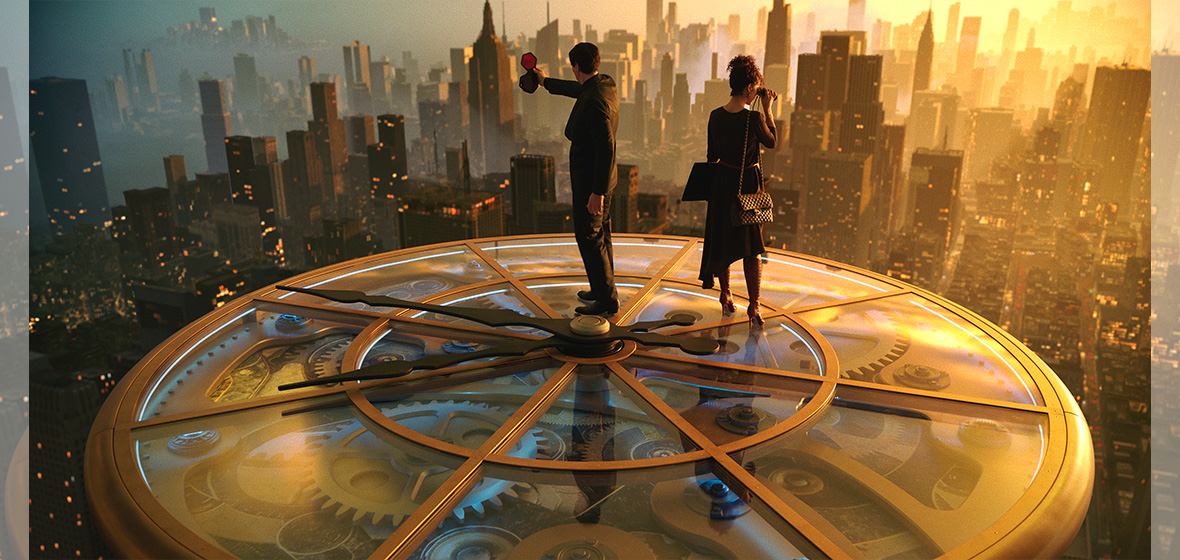“Megalopolis” is surely bold and daring — adjectives often used to describe director Francis Ford Coppola’s films. His attempts to revolutionize filmmaking are often critically schismatic. While most of the film feels like the ramblings of your drunk great-uncle at Thanksgiving, its redeeming visual qualities and sheer audacity align it with the rest of his filmography.
With a Letterboxd rating distribution nobody has seen before, a Rotten Tomatoes score of 47%, and an IMDb rating of 5.1, critics seem more polarized than ever — all for good reason.
“Megalopolis” is a retelling of the fall of ancient Rome set in a near-futuristic version of New York called “New Rome.” Adam Driver plays Cesar Catilina, an architectural genius vying to develop Megalopolis, a utopian “school” city, much to the chagrin of his foe Mayor Franklyn Cicero, played by Giancarlo Esposito. Even armed with this straightforward plot, Coppola takes the viewer on a bewildering, enigmatic critique of everything since the turn of the century.
As expected in a Coppola saga, the rest of the movie is filled out by the stories of its ensemble cast. Cesar falls in love with Julia, the mayor’s reformed daughter played by Nathalie Emmanuel. Cesar’s cousin, Clodio Pulcher, played by Shia LaBeouf, is kissing his sisters and devolving into a fascist. Aubrey Plaza’s character, Wow Platinum, is torn between Cesar and his uncle, portrayed by Jon Voight. The Taylor Swift stand-in, played by Grace VanderWaal, is a character and subplot that are gone before we even realize they’re there.
If the plot described doesn’t make sense, unfortunately, it’s not the direct fault of my explanation — the film is senseless. It spent a staggering forty years in development hell, and the script and Coppola are showing their age. There is no facet of this film — characters, themes, plot or simply ideas — that follows any clear logic. The characters feel less like real people and more like undeveloped ideas.
Cesar is a white male savior, Julia is there and Claudio is the darker side of X. The characters already don’t seem realistic, and this is made even worse by the ridiculous dialogue. Despite taking place in the future, all of the characters speak in sweeping undue monologues that fail to evoke the feeling that accompanies watching Greek and Roman tragedies.
Narratively, the movie falls apart further. Cesar has the magical ability to stop time, an ability the audience may believe will be central to the film, but it never advances the plot in a meaningful way. Besides, the existence of his power and why nobody else has powers are never explained either. This trend continues with Megalopolis itself. Cesar pleads with people to understand how he is trying to build a better future, but he fails to show how it will be better. The grungy 1990s version of New York Coppola posits as New Rome is surely not a utopia, but Cesar’s justifications of Megalopolis stop at “everyone will live close to a park” and “every man will have a garden.” While deforestation is a serious issue, tomatoes and trees are hardly telling of what Coppola and Cesar believe our society needs.
The film contains every possible talking point from the last forty years. These include the rise of fascism, the #MeToo movement, the treatment of female pop stars, political corruption, corporate failures and nepotism — even though Coppola’s granddaughter with no acting experience and his nephew, who has plenty, both appear in the movie. The plot does not attempt to support, address or critique any of these ideas, so the result is “We live in a society,” dressed in visual intrigue.
Despite being given the rambling of a madman to perform, the actors are trying their hardest to salvage this film. Driver is as unhinged, if not more, as the film calls for him to be. Laurence Fishburne is great, and he makes the ridiculous narration sound like it is contributing to the film. Plaza is definitively the best part of the film. Her dry humor and dedication and the sheer absurdity of her character make her so compelling to watch.
While Coppola should put the pen down, his eye for direction and editing should not be denied. The visuals are incredibly audacious. Admittedly, some of the CGI is so awful, it makes the blunders of the MCU look Oscar-worthy. However, once it gets back to what Coppola is good at — framing, editing and cinematography — the film excels. Each CGI-less shot is expertly crafted and is so intriguing. New Rome feels real and alive, fully immersing the audiences in the world.
There is a party scene in the film that a lot of viewers may hate, but the psychedelic trip we go on is ferocious and enticing. The choices made are some that many directors cannot pull off, but Coppola is always pushing the bounds of Hollywood directing. The editing is also a marvel. Seemingly in line with the nonsensical script, the cuts are erratic, but in a way that enhances the film instead of degrading it.
“Megalopolis” was supposed to be the gargantuan classic that ended Coppola’s filmography on a good note. Instead, the story of a man with ideas that only make sense to him was played out on screen and in real life. The $120 million self-financed project is currently flopping in theaters. Coppola states that this film will get better as you rewatch it. However, his ego has ballooned to epic proportions because I can’t imagine anyone is excited to watch this again.
Coppola has the utmost belief in himself and his ideas, and his failure to recognize his shortcomings is how “Megalopolis” arrived in theaters as a creative directorial portfolio instead of a cohesive film. He, and his obvious self-insert character Cesar, both believe themselves to be the saviors of their societies, when in reality, they are just white men waving their fists at the sky, refusing to offer any substantive opinions.


